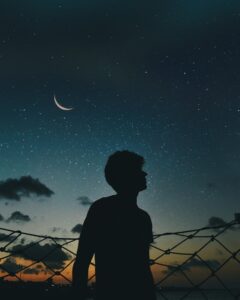
Seasonal depression, also known as Seasonal Affective Disorder (SAD), is a type of depression that occurs during specific times of the year, typically in the fall and winter months when there is less sunlight. Symptoms include feelings of sadness, fatigue, difficulty concentrating, and changes in sleep and appetite. One of the most effective treatments for SAD is light therapy, which involves exposure to artificial light that mimics natural sunlight. This article explores how light therapy works, its benefits, and how it can be effectively used to improve seasonal depression.
Understanding Seasonal Affective Disorder (SAD)
SAD is a mood disorder linked to seasonal changes and is most commonly associated with winter months when daylight hours are reduced. The lack of sunlight can disrupt the body’s internal clock (circadian rhythm) and lead to imbalances in brain chemicals such as serotonin and melatonin, which regulate mood and sleep.
Common Symptoms of SAD:
- Persistent low mood
- Loss of interest in daily activities
- Fatigue and lack of energy
- Difficulty sleeping or oversleeping
- Changes in appetite, particularly cravings for carbohydrates
- Difficulty concentrating
- Feelings of hopelessness or worthlessness
What is Light Therapy?
Light therapy, also known as phototherapy, is a treatment that involves exposure to a bright light that mimics natural sunlight. It is designed to compensate for the lack of sunlight during darker months and help regulate the body’s internal clock and mood-related chemicals.
How It Works:
- The light from a therapy lamp helps regulate serotonin levels, improving mood and reducing feelings of depression.
- It helps reset the body’s circadian rhythm, improving sleep patterns and energy levels.
- The therapy suppresses melatonin production in the morning, helping individuals feel more awake and alert during the day.
Benefits of Light Therapy for Seasonal Depression
- Boosts Mood and Reduces Depression
- Exposure to bright light has been shown to increase serotonin levels, which helps regulate mood and reduces depressive symptoms.
- Many individuals experience improvements in mood within a few days to weeks of starting light therapy.
- Improves Sleep Quality
- Light therapy can help regulate melatonin production, which is responsible for sleep-wake cycles.
- Using light therapy in the morning can improve sleep patterns and prevent oversleeping or daytime fatigue.
- Increases Energy Levels
- People with SAD often experience lethargy and a lack of motivation.
- Light therapy can help restore energy levels, making it easier to stay active and engaged in daily activities.
- Reduces Cravings for Carbohydrates
- Seasonal depression often leads to increased cravings for sugar and refined carbs.
- Regulating serotonin levels through light therapy can help curb these cravings and promote a healthier diet.
- Enhances Cognitive Function
- SAD can cause difficulty concentrating and memory problems.
- Light therapy helps improve focus, alertness, and mental clarity.
Source https://www.webmd.com/
How to Use Light Therapy Effectively
To get the most benefit from light therapy, it is important to use it correctly. Here are some guidelines:
- Choose the Right Light Therapy Box
- Select a light therapy box that emits at least 10,000 lux of light.
- Ensure the device filters out UV rays to prevent skin damage.
- Use It at the Right Time of Day
- Morning exposure (within an hour of waking up) is the most effective for regulating circadian rhythms.
- Evening use is generally not recommended, as it may interfere with sleep.
- Maintain Proper Distance and Duration
- Sit about 16-24 inches from the light source.
- A typical session lasts 20-30 minutes daily.
- Consistency is key; use it every day for optimal results.
- Combine Light Therapy with Other Treatments
- Light therapy can be used alongside other treatments such as cognitive behavioral therapy (CBT), medication, and exercise for better results.
- Engaging in outdoor activities during daylight hours can further enhance its effectiveness.
Potential Side Effects and Precautions
While light therapy is generally safe, some individuals may experience mild side effects, including:
- Eye strain or headaches
- Nausea
- Irritability or restlessness
- Insomnia if used too late in the day
To minimize side effects, start with shorter sessions and gradually increase exposure time. Individuals with certain conditions, such as bipolar disorder or eye conditions, should consult a doctor before starting light therapy.
Light therapy is a highly effective and non-invasive treatment for seasonal depression. By regulating mood-related brain chemicals, improving sleep patterns, and increasing energy levels, it provides significant relief for individuals struggling with SAD. With proper use and consistency, light therapy can help brighten the winter months and improve overall well-being. If symptoms of seasonal depression persist, consulting a healthcare professional for a comprehensive treatment plan is recommended.


Leave a Reply